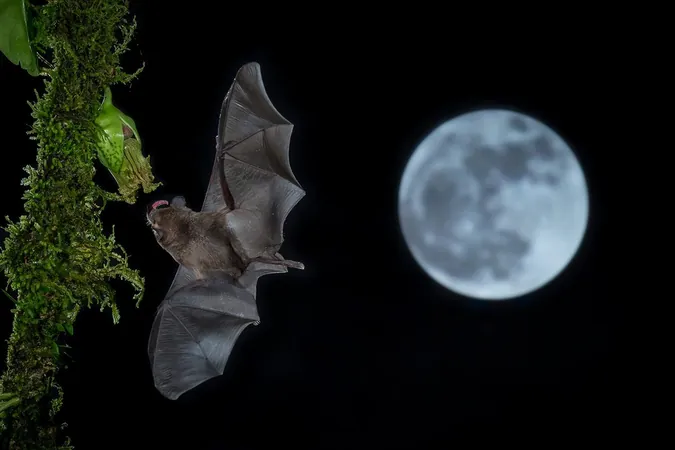
8 Amazing Animals That Rely on the Stars for Their Survival
2025-05-19
Author: Arjun
For centuries, humans have gazed in wonder at the night sky, drawing inspiration for legends, adventuring across oceans, and unlocking the mysteries of the universe. But did you know that a variety of animals out there also look to the stars for survival?
Sea Turtles: Navigating by Moonlight
Female sea turtles and their hatchlings are marvels of nature, instinctively making their way to the brightest horizon—the ocean—using moonlight as their guiding beacon. Unfortunately, urban light pollution can mislead them, causing them to wander in confusion or dangerously head towards roads.
Moths: The Light Trap
Moths are notorious for their attraction to artificial lights, a behavior known as positive phototaxis. Research suggests they may be mistaking these lights for stars—historically, their reliable navigation systems. This confusion can lead them into perilous loops, where they may even fly upside down, trapped in a glittering net of human-made illumination.
Bats: Masters of Polarised Light
Bats are famous for their echolocation abilities, but some species have an incredible knack for detecting polarised light patterns from the sun even after dusk. Scientific studies reveal mixed behaviors in bats related to lunar phases, demonstrating that while some decrease activity in moonlight for safety, others ramp it up!
Indigo Buntings: Stellar Migrators
The indigo bunting is not just a pretty bird; it's a champion navigator. In groundbreaking research conducted in the 1960s, these birds showcased their talent for celestial navigation by reorienting themselves to a manipulated starry sky in a planetarium, demonstrating how they instinctively know which way to migrate based on the stars.
European Eels: The Mysterious Spawners
Once thought to arise spontaneously from mud, European eels have revealed their secrets—they breed in the remote Sargasso Sea. As they make their lengthy journey back to Europe, studies suggest they guide themselves using the moon's position as well as other cues like the Earth's magnetic field.
Harbour Seals: Celestial Navigators
In a fascinating experiment, harbour seals demonstrated their ability to recognize stars. Trained in a modified planetarium, these seals managed to swim towards a star even after the orientation of the sky was changed, indicating they naturally use star patterns to navigate in the wild.
Dung Beetles: Straight-line Rollers
Dung beetles have stunned scientists with their ability to navigate by starlight, even on moonless nights! Research revealed that these beetles can maintain a straight course using the Milky Way, showcasing the incredible navigational prowess of these seemingly simple creatures.
Bull Ants: Twilight Navigators
Bull ants use sunlight for navigation during light hours, but some venture out at night. Remarkably, studies have shown they can follow the moon's polarisation patterns, successfully finding their way home in darkness, marking a significant first in the animal world.
These extraordinary creatures remind us of the profound connection between life on Earth and the cosmic wonders above, reminding us that the stars are not just for humans—but for countless species striving to survive in an ever-changing world.




 Brasil (PT)
Brasil (PT)
 Canada (EN)
Canada (EN)
 Chile (ES)
Chile (ES)
 Česko (CS)
Česko (CS)
 대한민국 (KO)
대한민국 (KO)
 España (ES)
España (ES)
 France (FR)
France (FR)
 Hong Kong (EN)
Hong Kong (EN)
 Italia (IT)
Italia (IT)
 日本 (JA)
日本 (JA)
 Magyarország (HU)
Magyarország (HU)
 Norge (NO)
Norge (NO)
 Polska (PL)
Polska (PL)
 Schweiz (DE)
Schweiz (DE)
 Singapore (EN)
Singapore (EN)
 Sverige (SV)
Sverige (SV)
 Suomi (FI)
Suomi (FI)
 Türkiye (TR)
Türkiye (TR)
 الإمارات العربية المتحدة (AR)
الإمارات العربية المتحدة (AR)